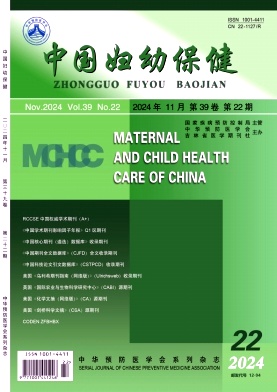PENGARUH PERBEDAAN SUHU DAN LAMA PENYIMPANAN ASI PERAH TERHADAP KANDUNGAN ZAT MAKRONUTRIEN
引用次数: 0
Abstract
Expressed breast milk is breast milk that is taken by expressing it from the breast to be stored and later given to the baby. A working mother, who still wants to give exclusive breastfeeding, will find it difficult to give her breast milk directly so that breast milk is given in the form of expressed milk. Basically, breast milk is sterile, but during storage at room temperature, the number of bacteria can increase and decrease the nutrients contained in breast milk. The nutritional components contained in breast milk are macronutrients such as protein, carbohydrates and fats. This study was a pure experimental study using post tes only group design. The purpose of this study was to examine the effect of differences in temperature and storage duration of Dairy Milk on the content of macronutrients (protein, carbohydrates, fat). The sample in this study were exclusively breastfeeding mothers for 3 to 6 months who were in the working area of the Nilam Sari Public Health Center, Bukittinggi City. Statistical test using One Way Annova test. The results of this study indicate that the levels of protein, carbohydrates, and fat in breast milk stored for 6 hours at room temperature 20-250C, for 7 days and 14 days in a freezer at a temperature of -150C experienced a significant decrease with a p value of 0.000 < 0.05. The conclusion of this study is that there is an effect of temperature and storage time of expressed breast milk on the content of macronutrients (protein, carbohydrates, fat). Therefore, breast milk should be given directly to the baby. However, for working mothers, the storage of expressed breast milk can still be done by taking into account the sterility of the breast milk container, the storage temperature and not repeating the storage. Keywords : Storage Temperature, Storage Duration, Macronutrient Of Breast Milk温差和挤奶期母乳储存对麦芽糖含量的影响
乳汁是从乳房中取出的乳汁,储存起来,然后喂给婴儿。一个仍然想要纯母乳喂养的职业母亲会发现很难直接给她的母乳,所以母乳是以乳汁的形式给的。基本上,母乳是无菌的,但在室温下储存期间,细菌的数量会增加或减少母乳中所含的营养成分。母乳中所含的营养成分是大量营养素,如蛋白质、碳水化合物和脂肪。本研究为纯实验研究,采用单组设计。本研究的目的是研究牛奶的温度和储存时间的差异对宏量营养素(蛋白质,碳水化合物,脂肪)含量的影响。本研究的样本是在武吉廷吉市Nilam Sari公共卫生中心工作区域的纯母乳喂养3至6个月的母亲。统计检验采用单因素方差分析。本研究结果表明,在室温20-250℃下保存6小时,在-150℃的冷冻室中保存7天和14天,母乳中的蛋白质、碳水化合物和脂肪含量显著降低,p值为0.000 < 0.05。本研究的结论是,母乳的温度和储存时间对母乳中常量营养素(蛋白质、碳水化合物、脂肪)的含量有影响。因此,母乳应该直接喂给婴儿。不过,对于职场妈妈来说,母乳的储存还是可以考虑到母乳容器的无菌性、储存温度以及不重复储存的情况来完成的。关键词:贮存温度,贮存时间,母乳常量营养素
本文章由计算机程序翻译,如有差异,请以英文原文为准。
求助全文
约1分钟内获得全文
求助全文
来源期刊
自引率
0.00%
发文量
45761
期刊介绍:
Maternal and Child Health Care of China is a semi-monthly journal sponsored by the Chinese Preventive Medicine Association and Jilin Medical Journal Press, with an impact factor. The journal covers multiple columns, including reform and management, health education, women's health, children's health, etc. Maternal and Child Health Care of China is not only one of China's authoritative academic journals, but also included in the RCCSE China Authoritative Academic Journals (A+) and China Academic Journal Impact Factor Annual Report Q1 Zone Journals. In addition, it is also fully included in the China Core Journals (Selection) Database and China Journal Full-text Database (CJFD).

 求助内容:
求助内容: 应助结果提醒方式:
应助结果提醒方式:


